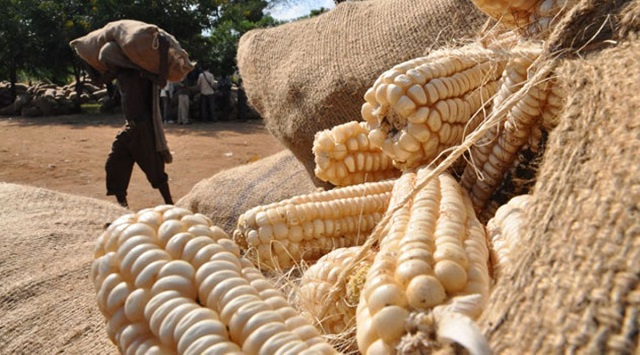Poor post-harvest handling blamed for aflatoxins in maize grains
Kiryandongo produces 160,000 tons of maize per year, and only 40% is locally consumed within the district.

By Our Reporter
Kiryandongo: Kiryandongo leaders have convened to discuss legislation on maize production in the district.
This follows a report from the UBOS and Kiryandongo District production offices, which revealed that poor post-harvest handling practices are contributing to 40% loss and increased aflatoxins in maize grains.
In order to curb the aflatoxins in maize grain, the leaders are resolving to enact a maize quality ordinance, which is meant to enforce good postharvest handling among the farmers so as to ensure good-quality maize fit for human consumption is produced.
According to Issa Hassan Byenkya, DPMO Kiryandongo, the biggest challenge in maize production is persistent mishandling of the maize grain and its products along the value chain, characterized by poor drying on bare ground, poor bagging, and premature harvest, which facilitate aflatoxins.
Byenkya added that it is very important to ensure quality maize production so as not to compromise the health of consumers. “You better starve now than eat contaminated maize. This will save you from suffering in the future. Even animals should not be fed on contaminated maize because you will eat the animals with poison,” said Byenkya.
Edith Aliguma, the district chairperson, emphasized the need for clean maize, which will appreciate maize valves and improve the livelihoods of the people of Kiryandongo.
She noted an improvement in post-harvest handling as a result of the Agriculture Cluster Development Project (ACDP), which provided tools.
Aliguma decried bad post-harvest handling practices where some farmers slash fresh maize tops for quick drying and fumigation while in the store, which threatens the lives of consumers.
Jonathan Akweteireho, the Kiryandongo Deputy RDC, said that South Sudan’s rejection of Uganda’s maize was a shame and called for action to improve the post-harvest handling of maize.
He commended the district leadership for coming up with the ordinance, which will address maize quality.
The presidential representative added that the ordinance will be a legal instrument to enforce quality maize production and deter schools from feeding the children contaminated posho.
“Some schools do not mind the quality of posho they give to our children. The majority go for third-grade posho because it is cheap. So this ordinance will help us to eliminate poor-quality maize on the market, “said Akweteireho.
Akweteireho further called upon the scientists to come up with sustainable solutions to promote organic farming as opposed to the use of chemicals.
Kiryandongo produces 160,000 tons of maize per year, and only 40% is locally consumed within the district.
Do you have a story about your community or an opinion to share with us? Email us at theugreports@gmail.com.






